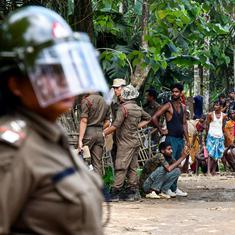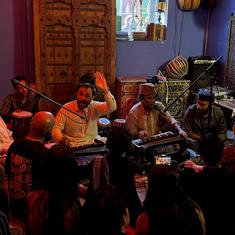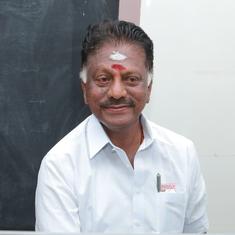Written by Shrinivas Vaidya and translated by Maithreyi Karnoor, A Handful of Sesame is a story of internal migration set in Northern Karnataka and the recipient of the Sahitya Akademi award in 2008. In Kannada, the title of the book is Halla Bantu Halla, which, Karnoor explains, is a “shouted out warning that the river is rising, metaphorical of the gushing flow of changing times”.
The metaphor of the title stays intact throughout the story: the novel traces the changing environment of India from the mutiny of 1857 to the cries of Quit India and the assassination of Mahatma Gandhi. In English, Karnoor translates the title to A Handful of Sesame, which signifies the ritual of pouring sesame and water in death ceremonies as an act of closure. She does this not only to reveal the inherent suffering in the story, but to hold on to the allegorical sense of “moving on”.
It begins with tradition
The story begins with two Brahmin brothers from Kashi on a painful journey to join the rebellion of Babasaheb against the East India Company in Nargund. They are battered and famished by the time they reach Navalgund, where the story is set, and captured on the suspicion of being dacoits. One of them escapes, dying alone in the mutiny with no one to perform his last rites.
The brothers did not anticipate the murderous rage and frenzy the Company would go into to curb the rebellion. Kamalnabh Panth, who is devastated by the loss of his brother, is still trapped in Navalgund where the locals are awed by his miraculous healing powers. He is a doctor unlike any other, and they are all unwilling to let him go. He eventually marries a local Brahmin woman who has just reached puberty. Embraced by the locals and taken into their fold, more so after this union, from Kamalnabh he becomes Kamalayya. And thus the story continues.
Kamalayya settles in Navalgund and has two children, Venkanna and Vasanna, and the novel flows into their story. In a way, the book holds not just linguistic and cultural mixtures but reminds us constantly about the diversity of Indian landscape by writing about different types of ritualistic practices and how it affects each member of the family.
Characters abound
Karnoor accomplishes not just faithfulness to the text and its beauty with this translation, but an empathetic representation of a linguistic minority unlike any other in the English language. She writes in her introduction: “The region the novel is set in – the one the author and I come from – is among the most underrepresented in Kannada literature, and more so in English...Northern Karnataka, which was a part of the erstwhile Bombay Presidency and later Bombay state, before being reassigned to Karnataka, embodies a linguistic and cultural characteristic that has been neither here nor there in modern history owing to its geographic distance from the centres that governed it.” With this translation, Karnoor not only gives voices to this lesser-known land, but provides us with the masterpiece it was meant to be.
The people populating the story keep increasing and in some parts it may feel like you have lost hold of the multiple names, but the author has a keen sense of character, blossoming details into each person and shifting narration with precision and clarity. No one remains one-dimensional and the significance of their roles is felt deeply with the metaphor of “moving on.” The importance of a family, of rituals and customs, of respect – these never go unnoticed in the story.
The third person omniscient narrator makes sure you live right in the centre courtyard, observing the woes and worries of the women, the financial burden accumulating on the men with a burgeoning household, the echoes of the people outside asking for alms and help for their medical troubles, the scolding the children receive from the adults of the house for not behaving like good Brahmins, and the incense and chanting of the daily prayers. Nothing goes unnoticed.
Within the family there is the patriarch Vasanna, or Vasudevachaar as he known by the entire village. There is Venkanna, a widower who is rumoured to have a relationship with a Muslim woman. There is Ambakka who was married at the age of ten and became a shaven widow sent back home three years later. There is Rukuma, whose parents died in the bubonic plague and was adopted by the Panths, who remains unmarried and without a family to call her own.
Narayana, also adopted by the family with no marriage prospects of his own for he is not a Panth with any land to his name, smokes and befriends shudras despite being a Brahmin. The household has all sorts of characters who are weighed down by the stress and anxiety of life in this traditional village.
You are placed in the middle of this broken universe, but instead of making this a sociological study into Hindu society of a medieval past, you cherish the bits of warmth, the bites of well-written characters and their coarse tongues, holding on to the snatches of happiness found in the world that shifts from pleasant to unpleasant in pre-independence Navalgund. The reader keeps moving on like this from the processions and humdrum existence of daily provincial life.
Enter modernity
In a remarkable feat, the novel shifts from this humdrum situation to the tight grasp of modernity. The younger boys of the house go to Dharwad to receive an education, dream of being lawyers, and participating in the independence movement. The Congress party finds itself in the background; people shout slogans for Bal Gangadhar Tilak and Mahatma Gandhi. Ramu, the youngest of the “educated” sons joins the Congress, threatening the entire family with constant police surveillance.
An awe-inspiring figure is deliberately kept in the background; we never hear his voice, the narration never shifts to his work with the party. This wave of nationalism that seemingly swept the entire country during the freedom struggle was not hitting everyone. Some were still desperately trying to hold on to customs, raise obedient children, and pay off their debts. Vaidya asserts with this book that their stories deserve a voice too.
Early on in the novel it says:
“Of late, the Neelwwa pond goes dry during the months of Chaitra. So the womenfolk go to the Tupari stream looking for springs. The Tupari stream is full of sharp quartz. They prick. If they pierce their heels, they rub wax on them and walk on their toes – if the toes are cut, the wax goes there and they walk on their heels. Thus, the women of Navalgund spend four months of the year limping – a scene that is either entertaining or pitiable depending on the eyes of the beholder. That was Navalgund.”
The world Vaidya constructs for the reader is often a dismal, almost brutal one, but never unreal. We have all inherited the culture of this ritualistic “Indian” life, unable to define what the Indian identity is, yet knowing what binds Indians together. What Vaidya’s greatest achievement therefore is, is not just representing a linguistic minority and a large span of history in a limited number of pages, but also ensuring a poignant preservation of this very “culture” with its grievances and happiness, for the “beholder” to consume.

A Handful Of Sesame, Shrinivas Vaidya, translated from the Kannada by Maithreyi Karnoor, Manipal Universal Press.










